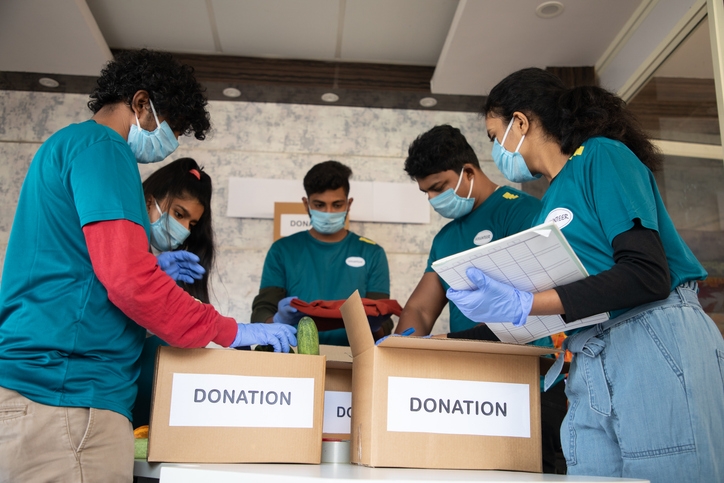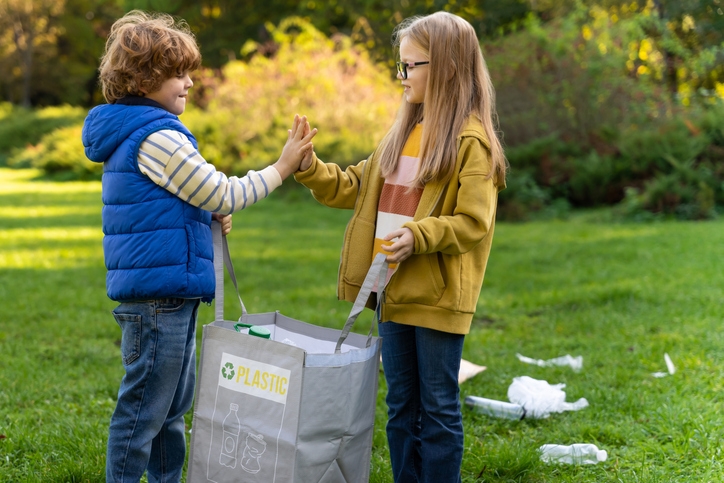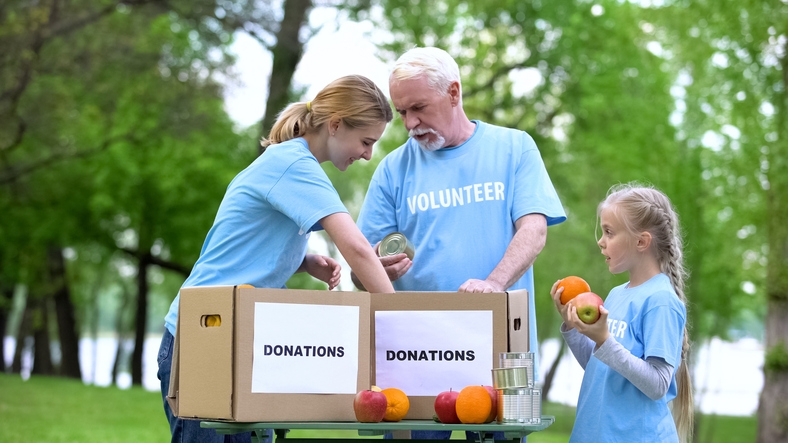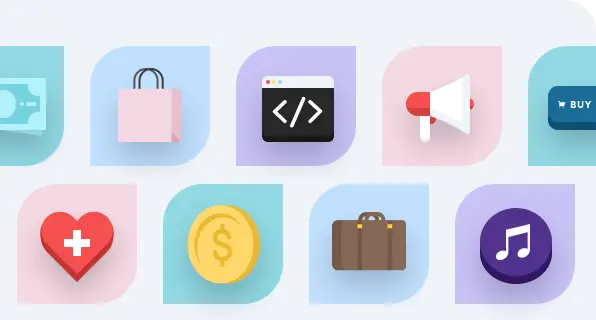How to Run a Local Charity Event That Builds Community and Raises More
Optimize your volunteer efforts with our essential guide. Learn practical tips and strategies to enhance your logistics for successful events. Read more!

Introduction: From Local Cause to Lasting Community Impact
Whether you're part of a grassroots nonprofit organization or a neighborhood group with a cause close to home, charity events are powerful vehicles for raising funds and bringing people together. But hosting a successful nonprofit event goes beyond picking a date and selling tickets. To make a real difference, your event planning process must reflect the heartbeat of your community.
This guide will walk you through how to host a local fundraising event that sparks action, boosts attendance, attracts corporate sponsors, and strengthens relationships with community members. From choosing your event format to managing the event day logistics, we’ll help you create a fundraising event that not only raises money but leaves a lasting legacy.
1. Choose a Local Problem That Inspires Community Action
Successful community events begin by identifying a shared local issue. Forget generic themes—anchor your event in a problem your neighbors actively care about.
Examples:
- A community park clean-up tied to an outdoor event for families
- A school fundraiser to provide uniforms for under-resourced students
- A local market event that promotes food security through fresh produce donations
Pro Tip: Interview a few community members, teachers, or local leaders beforehand. Their stories can inform everything from your event's purpose to your promotional materials.

2. Use Local Stories and Data to Make Your Event’s Purpose Real
Generic stats won’t move hearts—your community wants to see their reality reflected.
Effective nonprofit event planning means translating broad issues into local impact stories your audience can relate to.
Use Specific, Localized Data
Instead of saying: “Many children lack access to education.”
Say: “In our district, 1 in 3 students doesn’t have reliable internet access to attend online classes.”
Share Impact from Past Events
Don’t just describe your cause—prove your results with real community outcomes: “Last December, thanks to your support, we provided 240 winter coats to local families. This year, we’re aiming for 350.”
Include Personal Testimonials
Nothing builds emotional connection like a first-hand story: “Before the fundraiser, I couldn’t afford my textbooks. Now I’m in college—first in my family.”
Highlight Local Momentum
Mention real contributions from your community:
- “67 volunteers gave 432 hours last spring to support our meal drive.”
- “In Ward 8, 45% of families live below the poverty line—this event helps change that.”
- “14 local businesses donated food, raffle items, or services for this campaign.”
Visual Tools You Can Use
Bring your story to life with tools like Canva or Visme to create:
- Before-and-after timelines (e.g. student-to-scholar journeys)
- Progress graphics (e.g. “₹3,75,000 of ₹5,00,000 raised”)
- Mini-infographics with impact highlights from past events
Pro Tip: Share one story every 2–3 days in your content calendar leading up to the event:
Mix in stats, transformation quotes, and local wins. This builds trust, fuels excitement, and boosts event attendance.
3. Build a Planning Team With Community Members and Partners
If you want your fundraising efforts to truly resonate—and increase your chances of a successful event—involve key voices from the beginning.
Don’t wait until promotion to get buy-in. Instead, invite trusted community partners to help shape the vision.
Build a Grassroots Planning Team That Reflects Your Audience
Include:
- Local business owners who can support or sponsor
- Faith leaders or educators with built-in trust and networks
- Event volunteers from previous successful events
- Board members or active supporters
- A dedicated event coordinator & application to keep the staff on track
Why It Works: A collaborative team brings diverse ideas, shares the workload, and builds early excitement across different pockets of the community. It also increases the likelihood of receiving in-kind donations and corporate sponsorships.
Pro Tip: Assign “ownership roles” to reduce burnout. For example, let one member lead outreach to corporate sponsors, another handle the event registration page, and someone else manage logistics at the event venue.
4. Pick a Fundraising Event Format That Fits Local Needs
Choosing the right event format can make or break your event's success—especially in grassroots planning.
Your event should reflect how your community likes to gather, celebrate, and give.
Local-Favorite Format Ideas
- Silent Auction + Local Art Fair
Ideal for wellness, arts, or education-related fundraising efforts. Use local artwork, music, and bites to boost participation and raise money through creative means. - Picnic in the Park
Simple, cost-effective, and perfect for causes like youth empowerment, sports initiatives, or environmental awareness. Invite local musicians and food vendors to partner. - Annual Themed Dinner
A great choice for nonprofit organizations with major donors, where you can highlight success stories and offer corporate sponsorships with VIP experiences.
Logistics Tip:
Use a customizable event registration page to collect:
- Dietary preferences
- Number of guests
- Interest in volunteering
- Accessibility needs
These details help you plan a smoother event day and make guests feel seen and cared for.
5. Find a Venue That Supports Your Goals and Guests
Your event venue should be more than just beautiful—it should serve your goals, community needs, and practical logistics.
The best venues make the difference between a chaotic event and one that runs like clockwork from start to when the event concludes.
Community-Friendly Venue Checklist
- Is it accessible to seniors and guests with disabilities?
- Does it have restrooms, power supply, and weather shelter?
- Can it accommodate both quiet areas and interactive activities?
- Is it centrally located near your target community?
Smart Idea: Partner with community centers, local restaurants, or libraries for in-kind donations of space or services. Offer visibility via signage, social media tags, or a spotlight during the event.
Pro Venue Tip for the Event Coordinator: Visit the space at the same time of day as your upcoming event to check for lighting, parking, and potential interruptions (noise, traffic). A great venue reduces unexpected costs and improves attendee flow.
6. Recruit Volunteers and Define Roles to Keep Your Event Running Smoothly
A successful fundraiser runs on the strength of its team, and event volunteers are your frontline force.
To keep your event running smoothly, don’t just recruit people—assign them with intention.
Key Volunteer Roles to Fill
- Event registration & ticket sales at the entrance
- Setup & teardown for tables, chairs, and event materials
- Donation zone & crowd guidance to keep energy and flow high
- Social media & photography to share real-time moments and boost your event's visibility
Tool Tip: Use a centralized system like Google Sheets, SignUpGenius, or Azavista’s volunteer management features to schedule shifts and track commitments. Assign team leads for each function to reduce confusion on event day.
Bonus: Highlight your volunteers after the event concludes in thank-you posts, photo albums, or even a post-event dinner. Recognition leads to retention.

7. Collaborate With Local Vendors and Groups to Boost Participation
Looking to boost attendance and build excitement? Showcase the talent and heart of your neighborhood.
When local vendors, artists, or community groups participate, their networks show up too—making your upcoming event more vibrant and impactful.
Ways to Involve Local Stars
- Feature local musicians, theatre groups, or art collectives
- Source silent auction items or raffle prizes from nearby businesses
- Invite schools or youth groups to host mini performances or workshops
- Include in-kind donations like baked goods, crafts, or photo booths
Why It Matters:
This isn't just about this one event's success. You’re planting seeds for future collaborations, mutual growth, and community building.
Pro Tip: Include vendor spotlights in your promotional materials and social media countdowns. Everyone loves recognition—and it’s great visibility for them too.
8. Create Sponsorship Packages That Attract Local Corporate Sponsors
Not every sponsor wears a suit. Many local businesses would love to support your fundraising event—they just need the right invitation.
Create strategic corporate sponsorships that make it easy for them to say yes.
Smart Sponsorship Inclusions
- Naming rights for zones: e.g., “The Wellness Lounge presented by Lotus Pharmacy”
- Visibility on event registration pages, tickets, and table tents
- Social media mentions before, during, and after the event concludes
- Stage or emcee shoutouts, thank-you slides, or booth space
Sponsorship Tiers Example:
- ₹5,000: Logo on flyer + social media
- ₹10,000: Add booth/table at event + listing on website
- ₹25,000+: Top billing, stage mentions, branded zone + VIP tickets
Pitch Tip: Share event stats—like ticket sales from past events, expected footfall, and your cause’s fundraising goals. Show how their support leads to measurable local impact.
9. Promote Your Community Event With a Local-First Strategy
Flyers alone won’t do it. To truly raise awareness, build a plan rooted in local visibility and word-of-mouth momentum.
Community-Based Promotion Tactics
- Partner with community centers and churches to distribute handouts
- Ask local vendors to display posters and mini-table flyers
- Use WhatsApp groups, local Facebook pages, and neighborhood newsletters
- Reach out to local micro-influencers, teachers, or student leaders as brand ambassadors
Pro Tip: Start a 7-day countdown on Instagram Stories, featuring past attendees or vendors from past events. Bonus points for sharing throwbacks, behind-the-scenes clips, or countdown giveaways.
10. Design an Experience That Inspires Giving on Event Day
Fundraising is emotional—and your event's success depends on more than just attendance. To move people from passive supporters to active donors, you need to design an experience that sparks connection.
Experience Boosters That Make Giving Easy
- A live donor wall or leaderboard showing real-time contributions
- QR codes on program cards, signage, or tables for instant mobile giving
- A photo booth or “Why I Gave” station with props and a backdrop to encourage storytelling
Pro Tip: Time your biggest ask right after a heart-stirring moment—a beneficiary video, a personal speech, or a community-led performance. Seasoned event planners know that emotional peaks drive generosity.
11. Control Event Costs Without Sacrificing Impact
You don’t need a luxury budget to run a high-impact, successful event. Smart planning keeps your event costs manageable and your fundraising goals intact.
Cost-Saving Tips From the Field
- Use free tools like Canva for stunning invites, signage, and event materials
- Partner with local colleges or print shops for discounted flyers or badges
- Offer event ticket bundles with early bird or group pricing to boost early revenue
- Request in kind donations from vendors—decor, water, food, or prizes
Budget Tip: Always include a 10–15% buffer for unexpected costs in your event budget—especially for outdoor events or last-minute logistical shifts.
Pro Tip: If you’re planning multiple future events, maintain a cost tracker and note what exceeded or saved budget. It will help you refine your approach before your next event date.
12. Track Impact, Not Just Income, to Measure Your Event’s Success
A successful nonprofit event is about more than rupees raised. It’s about connections formed, awareness generated, and momentum built for future events.
What to Track Beyond Donations
- Number of first-time donors, volunteers, or event attendees
- Total volunteer hours and what roles they supported
- Feedback from post-event surveys (e.g., what resonated most?)
- Social engagement: story views, comments, reposts, and hashtag usage
Action Step: Send out thank-you emails within 48 hours of your event concluding, including:
- Key event metrics and impact visuals
- A few heartfelt testimonials
- A clear CTA to donate, volunteer, or register interest in your next event
Final Tip: Don’t let your learnings sit idle. Archive them into a “Lessons Learned” folder that your planning team can reference to measure success and level up your next community gathering.

Final Thoughts: Let's Go Local to Go Far
Charity events rooted in community don’t just raise money—they raise morale, trust, and long-term relationships. When you treat your community like co-creators, your fundraising goals become shared missions.
Whether you're planning your first neighborhood fundraiser or managing your nonprofit’s annual event, thoughtful planning, team effort, and local love will help you deliver a successful nonprofit event that matters.
Ready to simplify nonprofit event management and boost your event's visibility? Use tools like Azavista to streamline your event registration, volunteer tracking, and ticket sales—so you can focus on the impact.
More Event Marketing and Promotion












